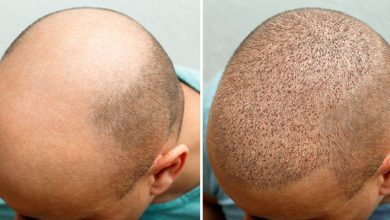Modvigil 200 Is An Effective Treatment For Sleep Disorders

Working long or for extended periods of time at working could disrupt your body’s natural cycles of sleep. Working outside of the standard 9-5 workday (i.e. from 7 p.m. to six a.m.) is to participate in “shift work.” Although the morning, night, and shift workers who rotate shifts are more susceptible to contracting the disease, anyone who is working irregular hours is at risk.
Health issues of grave concern could result from the failure to take care of the treatment for shift work disorders. Because of the illness employees are less productive at work increasing the chance that they will make an error or get injured. It is of vital importance for the health of the patient’s wellbeing, safety, and well-being that the condition of shift work be treated and diagnosed.
The International Classification of Sleep Disorders describes two main manifestations of shift work disorder
People suffering from shift work disorder often complain of Modvigil 200. Insomnia manifests itself in different ways at various times during the day. Night shift workers typically get up late at night while those who work between 4-7 a.m. struggle to fall asleep. The typical night’s sleeping time for people working shifts lasts between one to four hours.
Overly tiredness is a sign of shift work disorder that affects people who work late at night or early at dawn. It’s not uncommon for employees to be tired during their shifts. Due to their limitations, these individuals are not just less able to perform routine tasks, but they are also more likely to sustain physical injuries. The condition can be addressed by using Buy Modvigil 200 mg online.
It’s normal for shift workers to experience difficulties sleeping after they start working non-standard shifts. Sleep-wake cycles of shift workers should have been disturbed over a period of at least 2 weeks, and they should have been experiencing chronic symptoms for a minimum of three months before an assessment of a shift-work disorder to be established. To eliminate the possibility that the symptoms could be due to other causes, doctors can run additional tests.
Distinction Between Insomnia and SWSD
Insomnia, also known as “chronic trouble” with any of these sleep-related issues is a typical problem for those struggling in getting to sleep or being asleep (Modvigil ) or peaceful sleep. In spite of their best efforts and in the most ideal conditions insomnia sufferers can’t seem to go to sleep. They struggle with remaining awake throughout the day, and exhibit indications of impairment beyond sleepiness. Potentially, they have the following issues:
Feelings of fatigue or melancholy
- Inability or lack of focus to concentrate.
- Loss of memory
- Feeling down or anxious
- Sleepiness during the daylight hours.
In addition, behavior problems, such as hyperactivity are a common occurrence in the present.
Do you feel that you’re not sleeping enough?
It is possible that insomnia could be a result of a combination of factors.
But, it is more prevalent when it is accompanied by other mental health disorders. One of the main symptoms of shift work disorders is sleeplessness. Research has shown the fact that those who shift work are far more vulnerable to sleep disturbances than workers who simply struggle to stay awake during the workday. Modvigil 200 is the best treatment for sleep disorders.
The classic chicken-and-egg connection between insomnia and shift-work issues. The natural cycles of light and darkness could not be in tune with your body’s clock when you work at night or on weekends. It could be difficult to fall asleep, remain asleep or get a good night’s rest if your body is not in alignment.
Because of these causes working at night could cause insomnia.
It’s possible that shift-work disorder can be a factor. Sleepiness can last for long durations of time. Solve Your Sleep Problems Smart drug modafinil, readily available here atMedicscales.com.
A minimum of three times a week for a minimum of three months is regarded as chronic insomnia. It is possible that environmental factors can trigger short-term periods of insomnia for certain people that last for less than 3 months, at the very least. This is known by the term transient sleep. The diagnosis of a shift-work disorder is one that has a history of symptoms for at least 3 months. If shift workers are able to return to their normal schedule, a lot of them have a noticeable increase in the severity of their complaints.









